
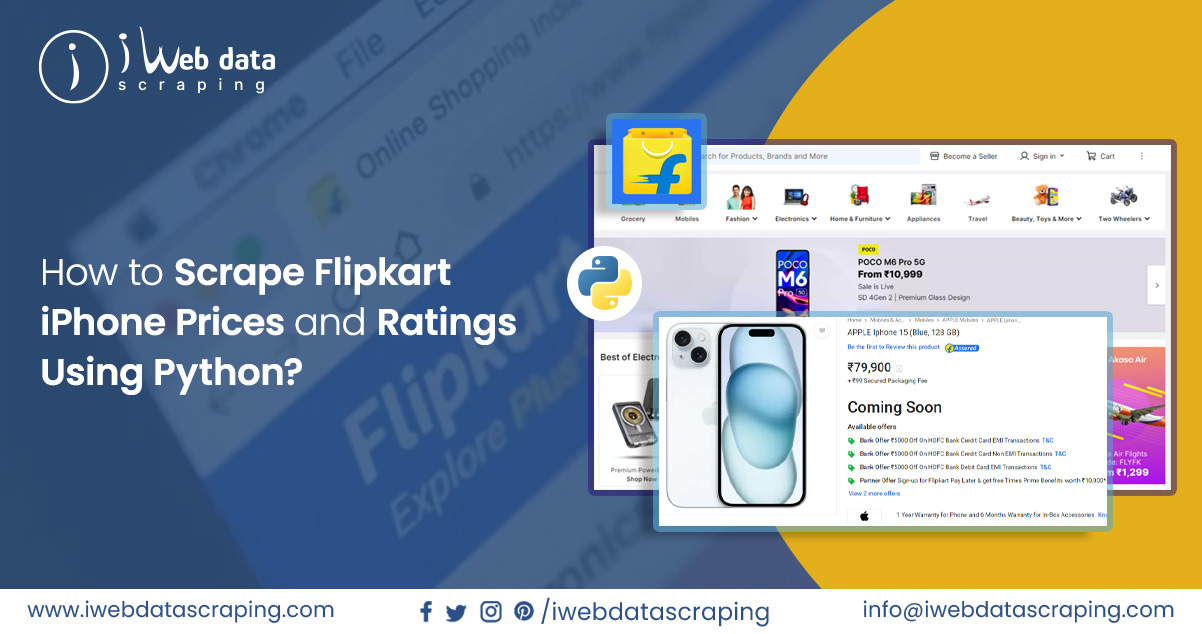
Flipkart, a prominent eCommerce giant in India, is a go-to destination for online shoppers. Beyond accessories, it offers a vast array of everyday essentials. Flipkart's dominance empowers numerous Indian businesses to enter the competitive online marketplace. Established in 2007, it has climbed to a global web ranking of 133, making it the 9th most popular Indian website. Notably, Flipkart was the first Indian eCommerce platform to achieve a remarkable milestone by surpassing the $1 billion mark in revenue. Scrape Flipkart iPhone prices and ratings using Python to gain valuable insights for informed purchasing decisions and market analysis.
Web scraping Flipkart data opens doors to a wealth of information. It enables users to extract details about product listings, prices, customer reviews, and seller information. This data can be invaluable for market research, price comparison, trend analysis, and competitive intelligence. Whether you're a consumer looking for the best deals or a business seeking insights into the eCommerce landscape, Flipkart data scraping provides a treasure trove of information to inform your decisions and strategies.
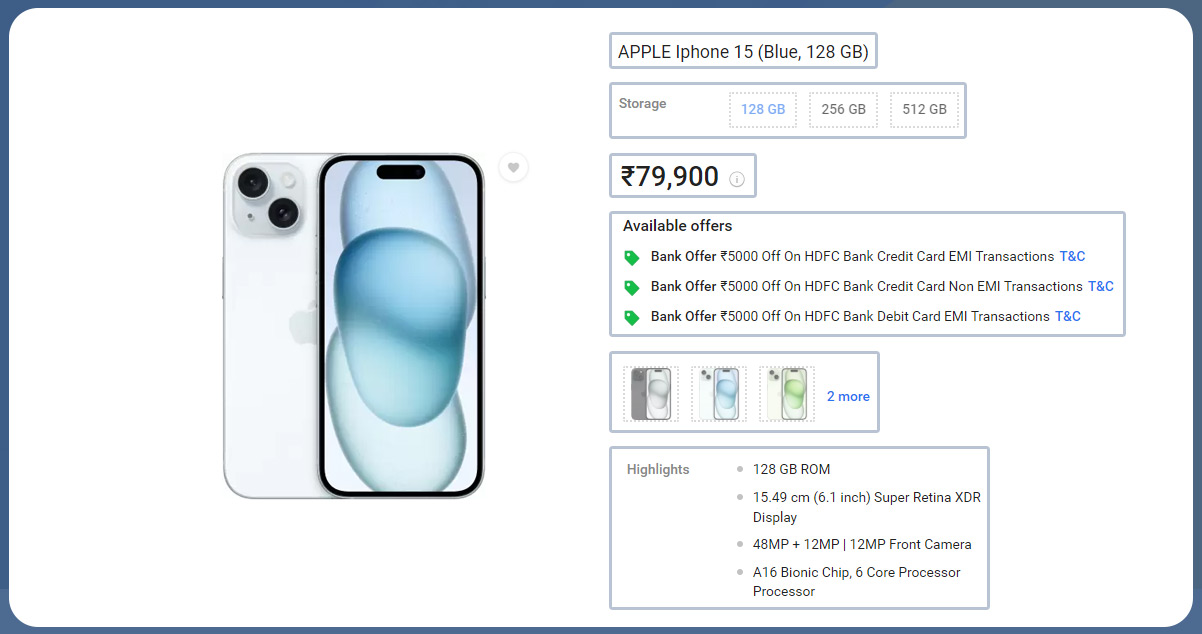

Scraping Flipkart product data can provide valuable insights and serve various purposes. Here are six unique significance of scraping Flipkart data in detail:
Competitor Analysis: By using Flipkart data scraping services, businesses can gain a competitive edge by analyzing their competitors' products, prices, and customer reviews. This information allows businesses to benchmark themselves against competitors and make necessary adjustments to stay competitive.
Pricing Strategy: E-commerce companies can use scraped data to monitor price changes on Flipkart. This data available using e-commerce data scraper helps them adjust their pricing strategies in real-time to remain competitive while maintaining profitability. Dynamic pricing, which changes based on market conditions, can be implemented with this data.
Product Development: Understanding Flipkart's customer preferences and product trends can inform product development decisions. By analyzing product descriptions, features, and customer reviews, businesses can identify gaps in the market and develop products that cater to specific customer needs.
Customer Sentiment Analysis: Scraping e-commerce reviews and ratings can provide insights into customer sentiment regarding products and brands. Sentiment analysis using Flipkart scraper can help businesses understand what customers like or dislike about their products and use this feedback for product improvement or marketing campaigns.
Inventory Management: Retailers can use scraped data to optimize inventory management. By tracking the availability and popularity of products on Flipkart, they can adjust their inventory levels accordingly to avoid overstocking or understocking, which can lead to financial losses.
Price Comparison and Deal Hunting: Consumers can benefit from scraping e-commerce data to compare prices and find the best deals. Price comparison websites and apps use scraped data to give users real-time price information, helping them save money on purchases.
Beautiful Soup is a valuable tool for web scraping, capable of efficiently parsing data from HTML and XML files. It simplifies interactions with HTML documents and handles encoding conversions seamlessly. As a developer, you can rely on Beautiful Soup to manage encoding concerns unless the document lacks an encoding specification or Beautiful Soup fails to detect one.
Here's an overview of the steps we'll follow:
We will focus on scraping the "Mobile section" and gathering comprehensive details about "Apple Mobiles." Let's dive into the world of web scraping Flipkart iPhone data!
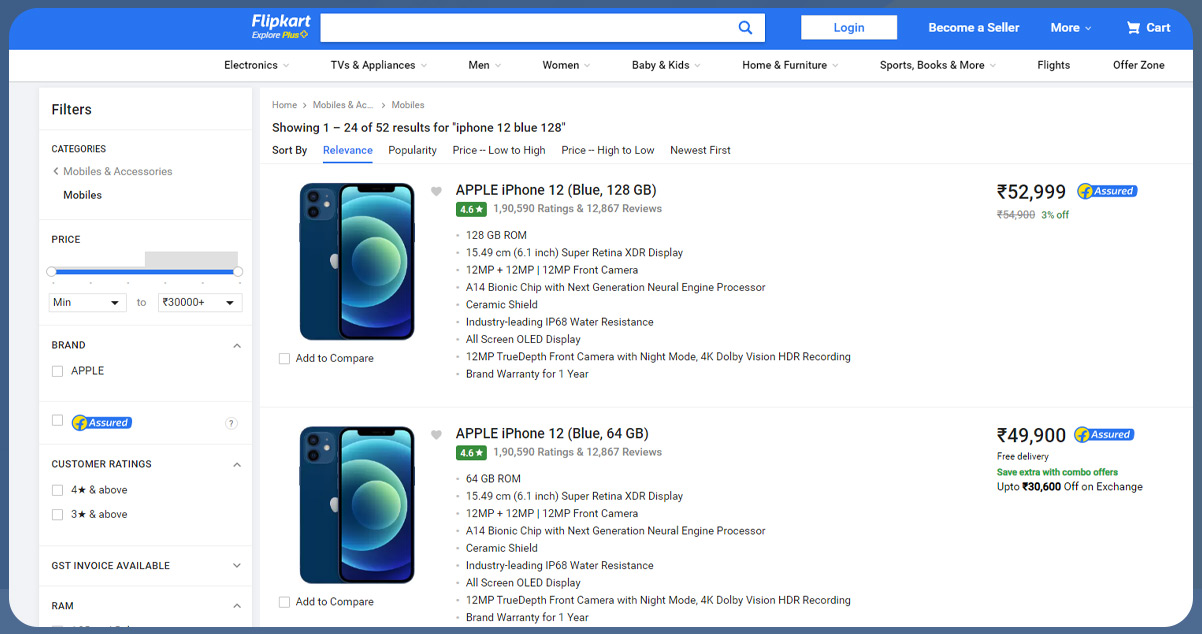
To scrape data such as Name, Price, Ratings, and Description from our webpage, you can follow these steps after visiting the provided URL:
Step 1: Install the required libraries using the following code in your terminal:

To import all the necessary libraries, you can use the following code in your preferred IDE:
These libraries—requests for making HTTP requests, BeautifulSoup for parsing HTML, and pandas for data manipulation—will be crucial for your web scraping project.

Let's craft a helpful helper function fetch_page_data(page_no) that retrieves and parses the HTML data from the desired webpage. You can change the page_no parameter to the page number you want to scrape. It's indeed a handy function!
Here's the code:
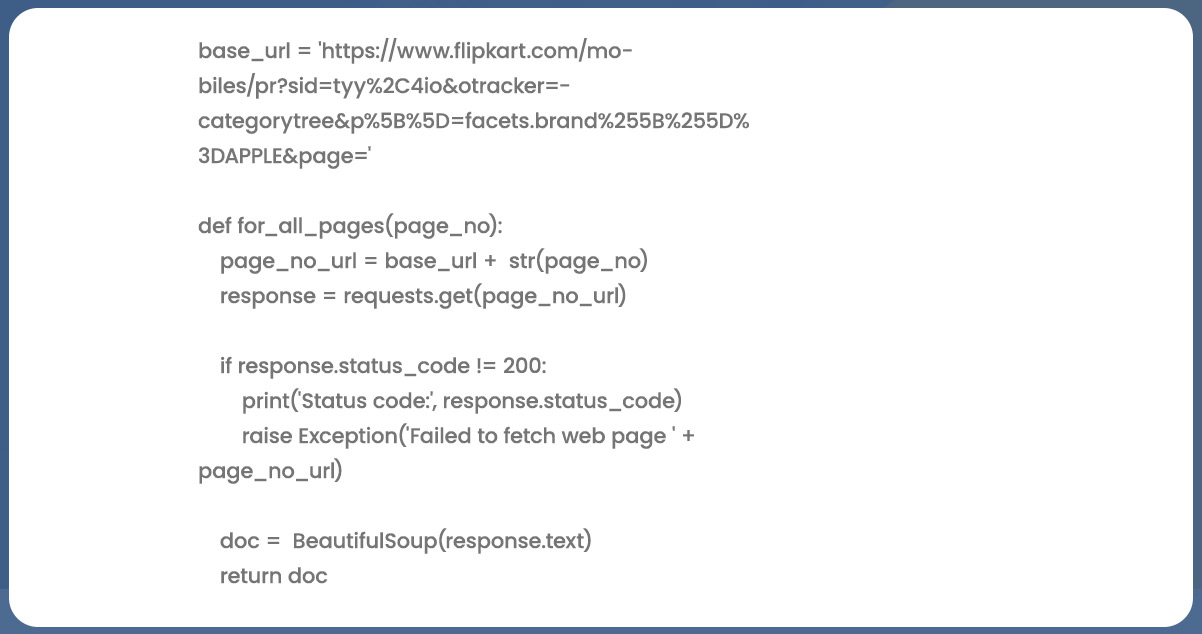
Certainly! You can scrape data by targeting specific classes using BeautifulSoup and create a handy helper function for future use. Here's how you can extract data from elements with the class _4rROIT inside a div tag:
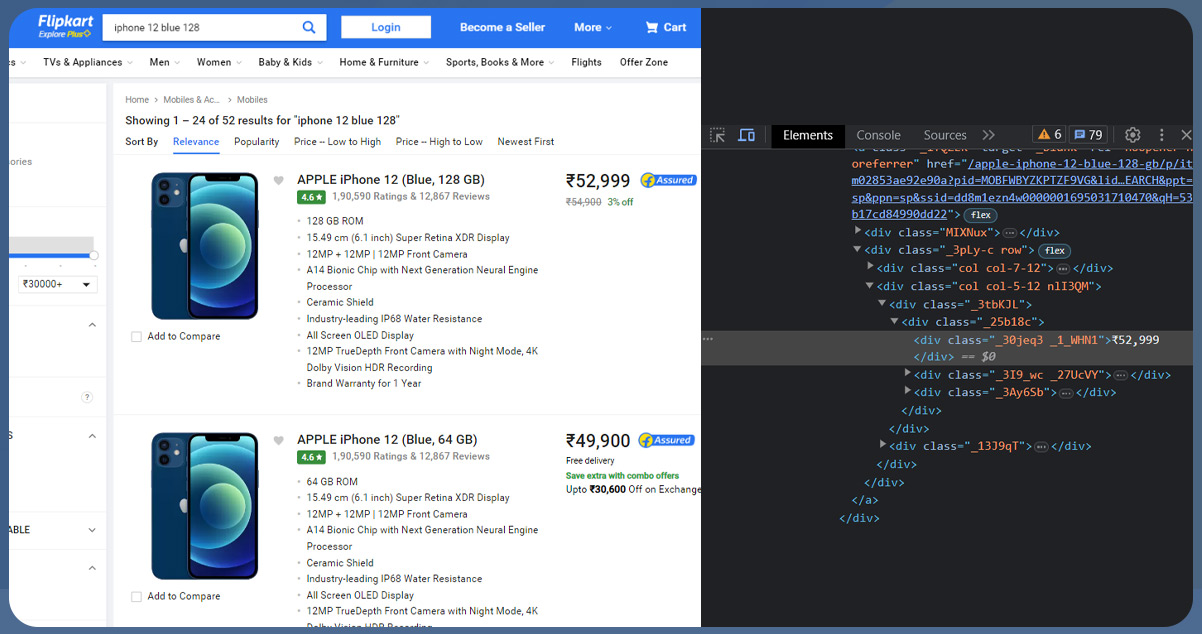
Certainly! You can create a comprehensive helper function that extracts all the desired information from the provided HTML document (represented by the doc variable). This function will navigate through different classes to extract the information you need. Here's a detailed implementation:
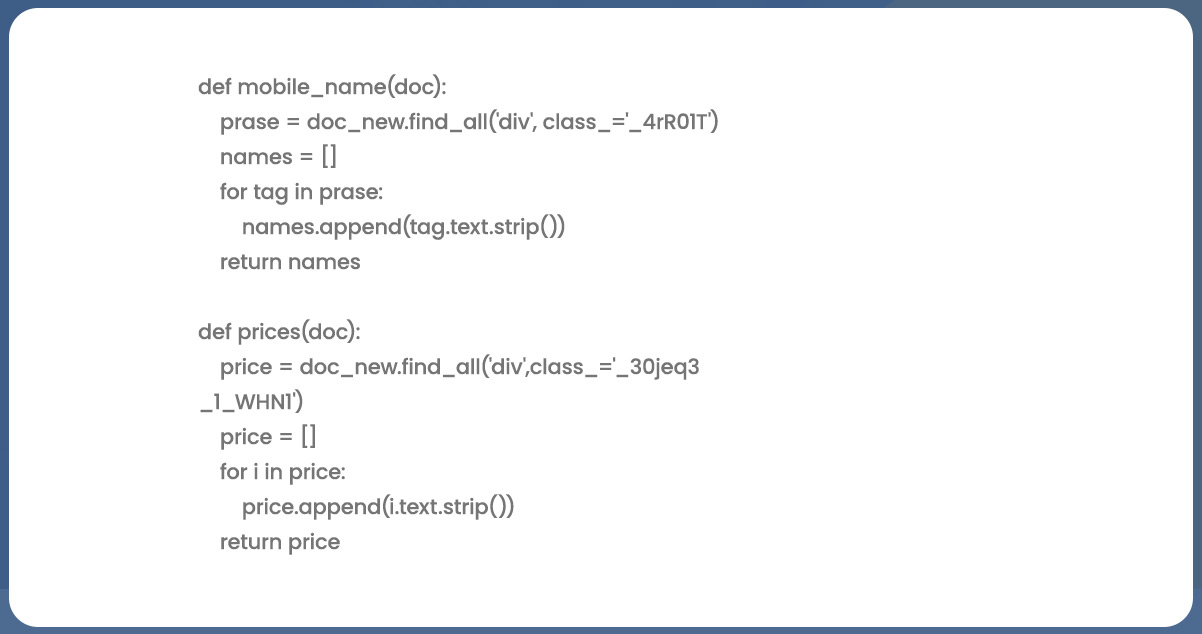
In this function:
You can replace 'name-class,' 'price-class,' 'rating-class,' and 'description-class' with the actual class names present in your HTML document. This function will extract all the desired information and return it in a structured format for further processing.
Certainly! You can use the doc variable and the previously created functions to obtain a list of mobile names and prices from your target webpage. Additionally, you can extend the first helper function to create a CSV file containing all the desired information. Here's a detailed implementation:

To rewrite the code for converting a DataFrame (df) into a CSV file with the name "all_information.csv," you can use the following code:
csv=df.to_csv('all information.csv')
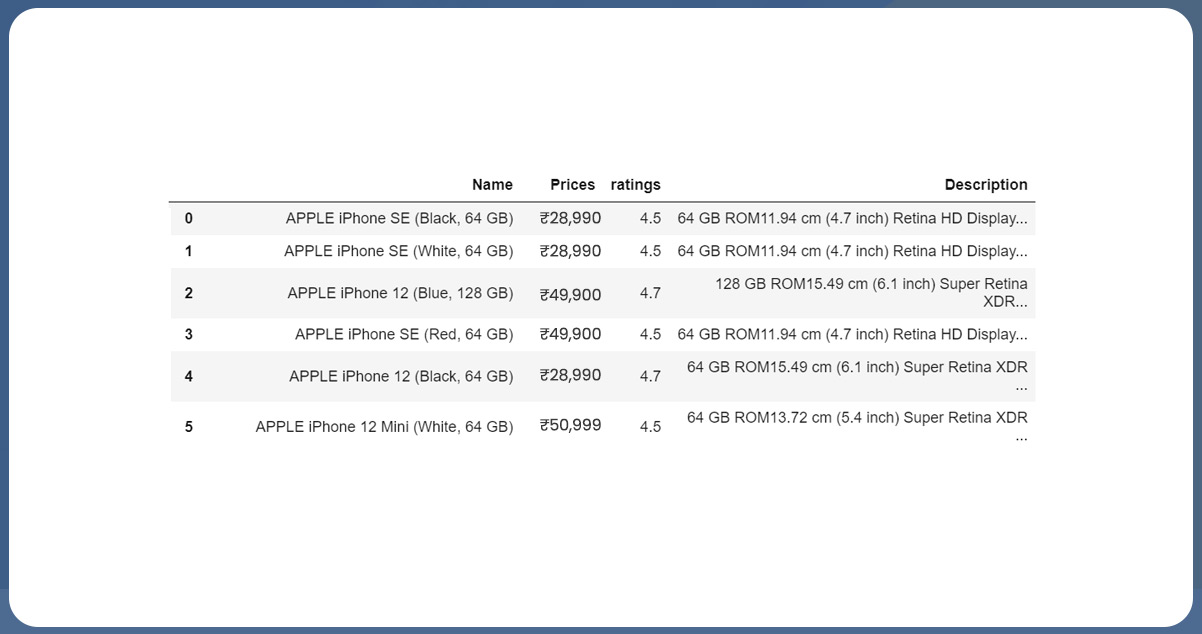
For further details, contact iWeb Data Scraping now! You can also reach us for all your web scraping service and mobile app data scraping needs